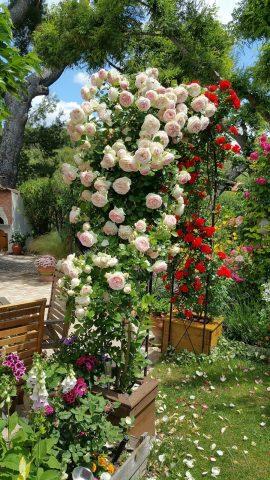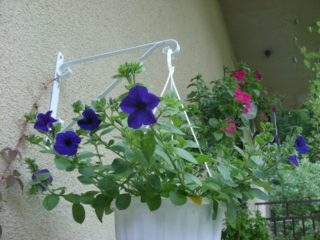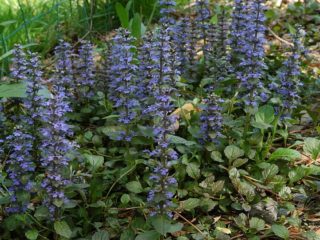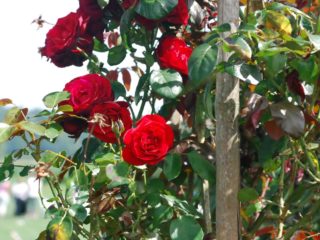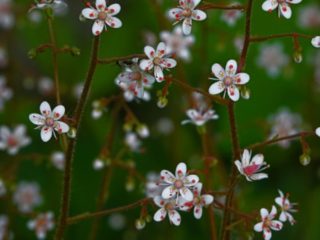Content
Rose Pierre de Ronsard is one of the best repeat-blooming varieties with a pleasant aroma and large flowers of a delicate pink hue. The bush is large, produces drooping but quite persistent shoots. It is used for arched and other types of vertical gardening, as well as in flower arrangements.
Origin story
The variety was developed relatively recently - in 1985. It was obtained by specialists from the company Meilland International, registered and operating in France. The name is associated with the poet Pierre de Ronsard, who lived in the 15th century. The fact is that in 1985 exactly 400 years had passed since the anniversary of his death.
The flower turned out to be very beautiful, and almost immediately the rose Pierre de Ronsard began to be called the Eden rose. The designation usually indicates Eden 85 or Eden 88. The first digit is associated with the year the crop was bred, and the second with the year of its registration.
Quite quickly the variety gained popularity and spread to neighboring countries.In 2000 and 2001 received five awards from the American Rose Society. In 2006, a survey of flower growers from 37 countries was conducted, and according to the results, it was the Pierre de Ronsard variety that received a place in the Hall of Fame, which was established by the World Association of Rose Growers.
Description of the rose Pierre de Ronsard with photo
The variety belongs to climbers. These are climbing roses, the stems of which are quite thick and strong. It is also classified as a grandiflora, since the Pierre de Ronsard rose variety has a long flowering period and is often used to decorate parks and gardens.
The shrub is quite tall, reaching 1.5-3 m, sometimes 3.5 m. The plants are branched and voluminous, spread up to 2 m wide, and take up quite a lot of space. But since the shape of the bush is correct, it looks elegant and even compact. The shoots of the Pierre de Ronsard rose are thick, bend in an arc, with sparse thorns. Thanks to this, they can be used in arched structures for vertical gardening.
The foliage is large, harsh, and the color is rich dark green. The surface practically does not shine in the sun, the edges are uneven, with teeth.
The flowers are large, reaching 9-10 cm in diameter, and some specimens reach up to 15 cm. But there is also a variety of rose mini Pierre de Ronsard - its flowers are no more than 7 cm, and the height of the bush is within 2 m. It grows on each stem from 1 to 3 inflorescences. They belong to the terry type - they consist of 50-60 petals, which are arranged in several rows. The aroma is weak, but quite noticeable.

The inflorescences are large and very attractive
The shape of Pierre de Ronsard rose flowers is cup-shaped, spherical, and looks three-dimensional. At the same time, the petals are long and attractive. The color is creamy, similar to ivory, and the edges of the petals are bright pink, sometimes carmine. The color palette is changeable.The inner petals are pinkish, and the outer row is white. Due to the fact that the inflorescences are quite heavy, the peduncles droop a little, but this only adds sophistication.
The Pierre de Ronsard variety is a repeat bloomer. Roses first appear in June, and then at the end of July and August. If you follow the growing rules, the flowering is abundant, at this time the bush looks very attractive. At the same time, there is no break in flowering as such - after the first wave, the flowers become smaller and appear in small quantities. Then comes the second period, when the inflorescences are already larger.
The rose variety Pierre de Ronsard was originally bred for the warm and humid Mediterranean climate. Therefore, in Russian latitudes, flowering may be somewhat worse. If the summer is cool or, conversely, hot and dry, the buds do not open completely. The variety's winter hardiness is also low - it belongs to zone 6 and can withstand frosts only down to -23 degrees. Therefore, such a rose can only be grown in the southern regions. If with cover, then in the middle lane.
It is possible to judge the decorativeness of a plant only at this age - there is no need to rush to conclusions.
Advantages and disadvantages
Rose variety Pierre de Ronsard produces large bushes that can grow in the same area for a decade or even 15 years. Flowering is abundant, in two waves, so the decorative qualities are very high. In addition, the plant has good immunity.
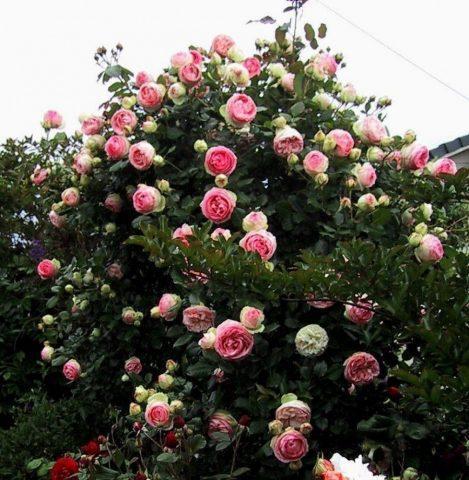
Tall, spreading bush
Pros:
- very beautiful, quite large flowers;
- pleasant aroma;
- flowering in two waves;
- excellent immunity to fungal infections;
- Possibility to use for cutting;
- can grow in partial shade.
Minuses:
- low resistance to rain;
- poor winter hardiness;
- the bush is spreading, takes up a lot of space;
- needs shelter for the winter.
Recommendations for cultivation
Rose Pierre de Ronsard, like many other varieties, is demanding on growing conditions. Since it does not have good winter hardiness, it is important to plan planting dates correctly. If in the south you can start work both in spring (April) and autumn (October), then in the middle zone, the Volga region, and the Black Earth Region, it is better to plant in the spring, when the earth has finally thawed and warmed up, i.e. no earlier than the end of April.
The soil is prepared in advance - dug up, add a bucket of compost or humus per square meter. If the soil is dense and clayey, it is also necessary to add 3-5 kg of sawdust or sand to the same area. When choosing a place to plant Pierre de Ronsard roses, take into account that it is sunny and, if possible, protected from the winds from the north.
When landing, proceed as follows:
- Dig holes according to the 2*2 m pattern.
- Place small stones 3-5 cm high in the hole.
- The seedling is rooted and covered with soil.
- They dig in and trample down a little so as to deepen the root collar by 7-8 cm.
- Then water with settled water (1 bucket) and after a few days mulch with straw and sawdust.
To grow a Pierre de Ronsard rose with large flowers, as shown in the photo, it is important to organize good care. Water the bushes weekly (if there is no rain) and twice as often during dry periods. Only distilled water is used.
Fertilizers need to be given several times per season, starting from the second year. In the spring, urea or ammonium nitrate (20 g per 10 l) is applied, at the stage of bud formation - a complex fertilizer, for example, azofoska.Instead, you can give superphosphate (40 g) and potassium sulfate (30 g). Rose Pierre de Ronsard is fed with exactly the same composition three more times with an interval of three weeks.
Periodically loosen the soil and remove weeds. Be sure to carry out autumn pruning in October, removing all branches older than three years and shortening this year's growth by 1/3.

Plants need to be fed 3-4 times per season.
How does it reproduce
Rose Pierre de Ronsard is propagated in two ways:
- Cuttings.
- By layering.
In the first case, at the beginning of summer, green growth 8-10 cm long is cut from the bush (at least three buds on each). Next, make an oblique lower and straight upper cut, remove the lower leaves, and shorten the rest by half. Place the cuttings in a solution with a growth stimulator, for example, Epin, for 6-8 hours.
Then they are planted in fertile soil, covered with a jar, periodically ventilated and watered. They take them home for the winter (in the south they can be left in open ground and mulched). Then they are grown for another two years, and in the third season in the spring they are planted in a permanent place.
There is also a way to propagate the Pierre de Ronsard rose by layering. In this case, at the end of spring, the lower layers are bent, fixed with a metal bracket and sprinkled with fertile soil. They are carefully mulched for the winter, and next spring they are cut off from the mother bush and replanted in the main place.
Diseases and pests
Rose Pierre de Ronsard has good immunity to powdery mildew and a number of other fungal infections. Therefore, as a preventive measure, it is sufficient to carry out the treatment in early spring.To do this, use copper sulfate, Bordeaux mixture, “HOM” or other fungicides.
In the summer, it is necessary to periodically inspect the bushes for signs of aphids, spider mites and other pests. If necessary, treat with insecticides:
- "Decis";
- "Aktara";
- "Fufanon";
- "Ephoria" and others.
Application in landscape design
The Pierre de Ronsard variety is quite large, so it is most often used in single plantings. On the other hand, you can make flower arrangements. The main ways to use roses in garden design:
- Landing near the house.
- Arched landscaping.
- Another similar option.
- Single landing.
- Landing near the house.
Conclusion
Rose Pierre de Ronsard can decorate almost any garden. The variety is quite demanding to care for, but produces many large flowers from June until September. Winter hardiness is low, so in most regions it is necessary to make a shelter in the fall.
Reviews from flower growers about the rose Pierre de Ronsard


